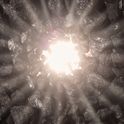One of the scientific revolution’s great achievements was the categorisation of nature. But some categories turned out to be misleading. The classic example is race, the subject of Angela Saini’s Superior (Fourth Estate). Given that racial divisions are so culturally determined—in the US many mixed-race people are classified as black—it makes little sense to ascribe them genetically inherited characteristics. Ironically, she argues, well-meaning attempts to identify health problems with particular races reinforce the same binaries.
The idea of a distinctive male or female brain is a hangover from 19th-century phrenology argues Gina Rippon in The Gendered Brain (Bodley Head). Despite appearing to be more sophisticated, brain scans have proved just as susceptible to stereotyped interpretations (here’s why women can’t read maps, and so on). Are there sex differences in the brain at birth? Rippon says simply that “we don’t know.”
Olivia Gordon’s son was saved by surgery in the womb. The First Breath (Bluebird) combines memoir with interviews with neonatologists, obstetricians and surgeons. Gordon also examines early theories about genetic abnormalities that placed the blame with mothers’ “troubled thoughts.” In similar territory is Mother Ship (Chatto) by novelist Francesca Segal, her harrowing diary of the 56 days her twin girls spent in intensive care.
Why does the Universe have a mathematical twin that appears to mimic it in every way? Graham Farmelo suggests some answers (and shows his working) in The Universe Speaks in Numbers (Faber). Artificial Intelligence is starting to mimic great art. Marcus du Sautoy’s The Creativity Code (Fourth Estate) shows that it’s getting very hard to tell the difference between music composed by a human being and a computer. You can even program the algorithm with a bit of genius-like rule-breaking.
Trees mutually support one another through an underground network—dubbed “the wood wide web”—of fungal species, sharing nutrients if one of them is dying. So Robert Macfarlane reveals in Underland (Hamish Hamilton), which delves beneath the surface of the earth from ancient burial mounds to Parisian catacombs. Floating above ground is Caroline Crampton’s The Way to the Sea (Granta), a nature memoir about the author’s upbringing by the Thames Estuary. Watching the tide roll in the same way it has done for thousands of years, Crampton reflects on how landscapes change—and don’t: “The Thames’s mutability is its permanence.” Charlotte Runcie’s love of the sea represents a yearning for adventure that seems tantalisingly out of reach. Her Salt on Your Tongue (Canongate) is populated by women standing on the shore as they await their lovers’ return.
If temperatures keep rising, then the sea could easily overwhelm us. David Wallace-Wells’s The Uninhabitable Earth (Allen Lane) asserts that if the planet warms by just 3.2 degrees Miami, Dhaka, Shanghai and Hong Kong will flood, plus 100 other cities. As he writes, “the facts are hysterical.” Can anything be done? Naomi Klein in On Fire: The Burning Case for the Green New Deal (Allen Lane) and Ann Pettifor’s The Case for a Green New Deal (Verso) offer compelling practical solutions. Scientific advances may, in the end, help to save us. But we need a fundamental realignment of the economy. Otherwise future nature writing will read more like dystopias.

The best science books of 2019
As part of Prospect's Books of the Year special, we round up the best science books
December 17, 2019











